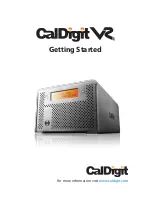
Another reason for choosing hardware encryption is added security.
If encryption is performed in software and the encrypting host is
compromised, then the attacker could alter the code used to perform the
encryption. Moreover, most hackers are specialized in software hacking
with brute-force attacks on encryption keys or middleman attacks. The
altered algorithm could insert deliberate backdoors in the encryption
software, which may be easily detectable by hackers. Hardware
encryption devices are harder to tamper with because of the difficulty
in accessing the device itself, physically. The second benefit of using an
internal microprocessor to encrypt is that it provides a secure location
to store the algorithm key. This prevents the key from being stolen
and used elsewhere. Private keys in software can easily be copied and attacked
off-line. In contrast to software encryption, our hardware encryption
solution does not include any backdoors, keeping your data even safer.
How safe is it against hacking?
The technical details of many encryption methods used in public
networks today are common knowledge. For these methods the security
function is contained in a bit of addition information (the key), which is
inserted during encryption. Theoretically, any encryption method can
be cracked by trying all the possible keys. In practice, however, when
a key of sufficient length is used, security breaches of this type can be
prevented. DES is relatively easy to break with today’s rapidly advancing
technology. In 1998, the Electronic Frontier Foundation, using a specially
developed computer called the DES Cracker, managed to break DES in
less than 3 days. And this was done for under $250,000. The encryption
chip that powered the DES Cracker was capable of processing 88 billion
keys per second. In addition, it has been shown that for a cost of one
million dollars, a dedicated hardware device can be built that can search
all possible DES keys in about 3.5 hours. This just serves to illustrate that
any organization with moderate resources can break through DES with
very little effort these days.
Regarding the SAFE drive, the secret key is stored in the buffer, which is
encrypted itself. Consequently, it is nearly impossible for non-authorized
users to obtain the key and access the data. Moreover, there are practical
limits to encryption block lengths. At 128 bits, as with Triple DES, decoders
run up against physical and practical limitations. A computer that could
test all the keys of this length would have to possess unimaginable
computing power. Currently, this is only theoretically possible. To avoid
brute-force attacks, some IT departments tend to over-encrypt data.
People tend to think: “If 128 is good, then 256 is better.” That’s true to
some extent but encrypting data slows performance, even with today’s
high-powered processors, so security executives should carefully weigh
the need for strong encryption versus speed deterioration.
Established in the US, Europe and Asia, LaCie is the world’s leading producer of PC and Macintosh compatible
storage peripherals. Through a specialized sales dealer network, LaCie offers innovative solutions for
professionals in many applications (graphics, audio, video, web design, digital photography, etc.). What
differentiates LaCie is the quality and design of its products—original creations by designers such as Philippe
Starck, Porsche Design GmbH and Neil Poulton. LaCie is listed on the Paris Nouveau Marché (code 5431).
The LaCie logo is a registered trademark of LaCie Limited. All other products and company names are trademarks or registered trademarks of their respective owners.
Sources:
http://www.biometrics.org/html/introduction.html
http://csrc.nist.gov/cryptval/des/tripledesval.html
http://www.iusmentis.com/technology/encryption/des/#SecurityofDES























